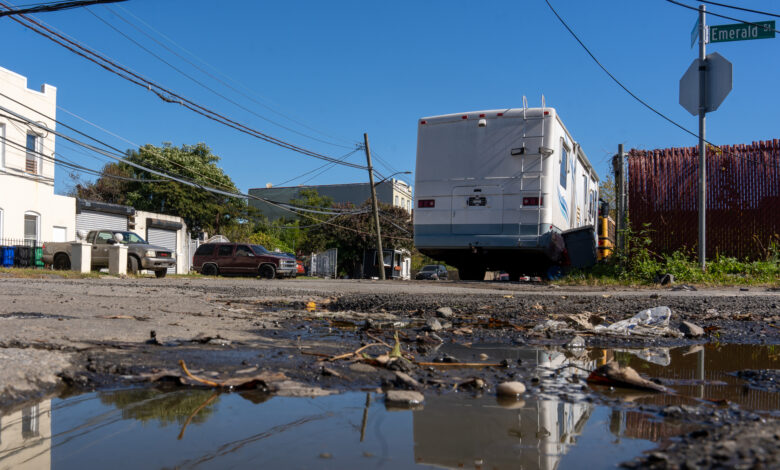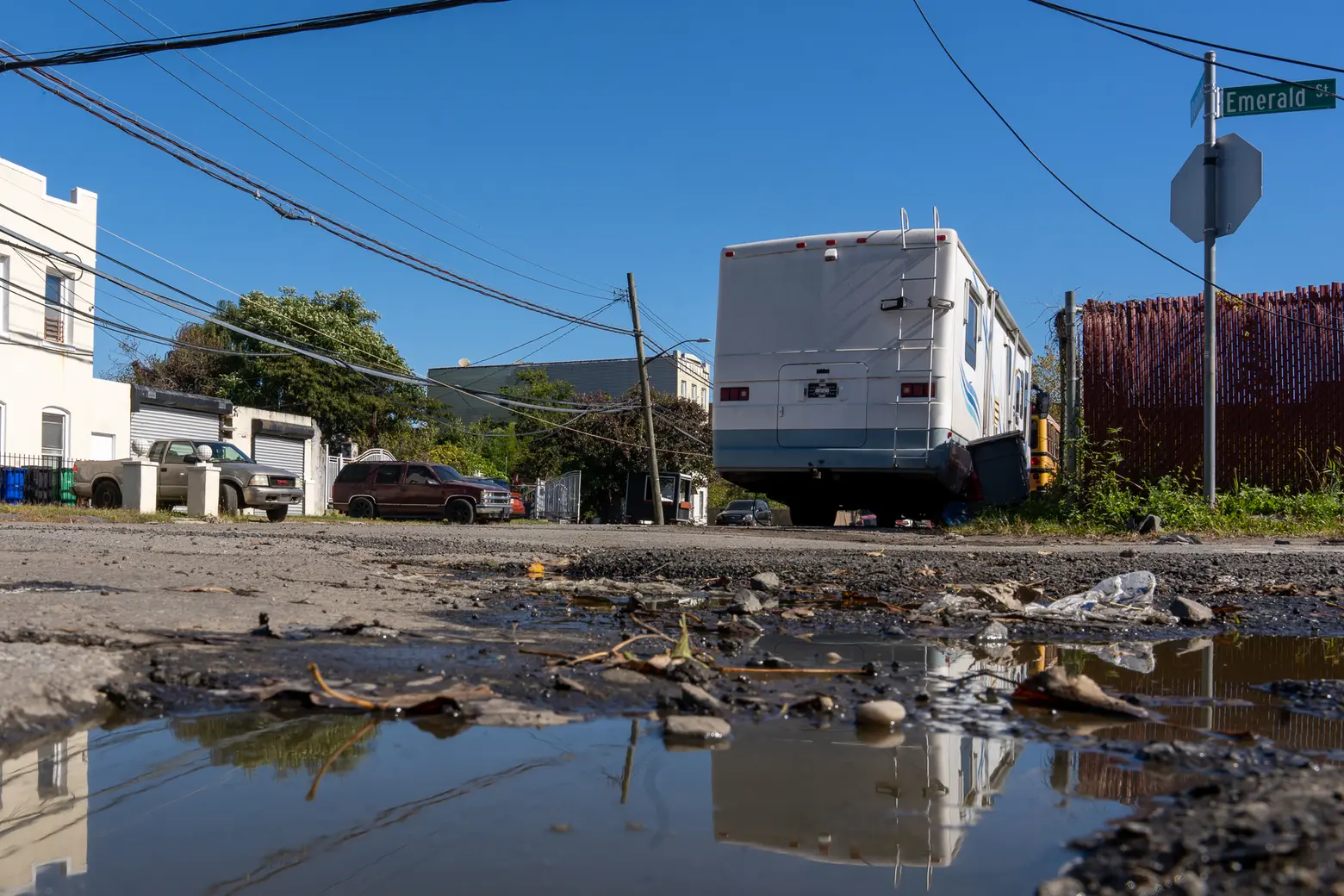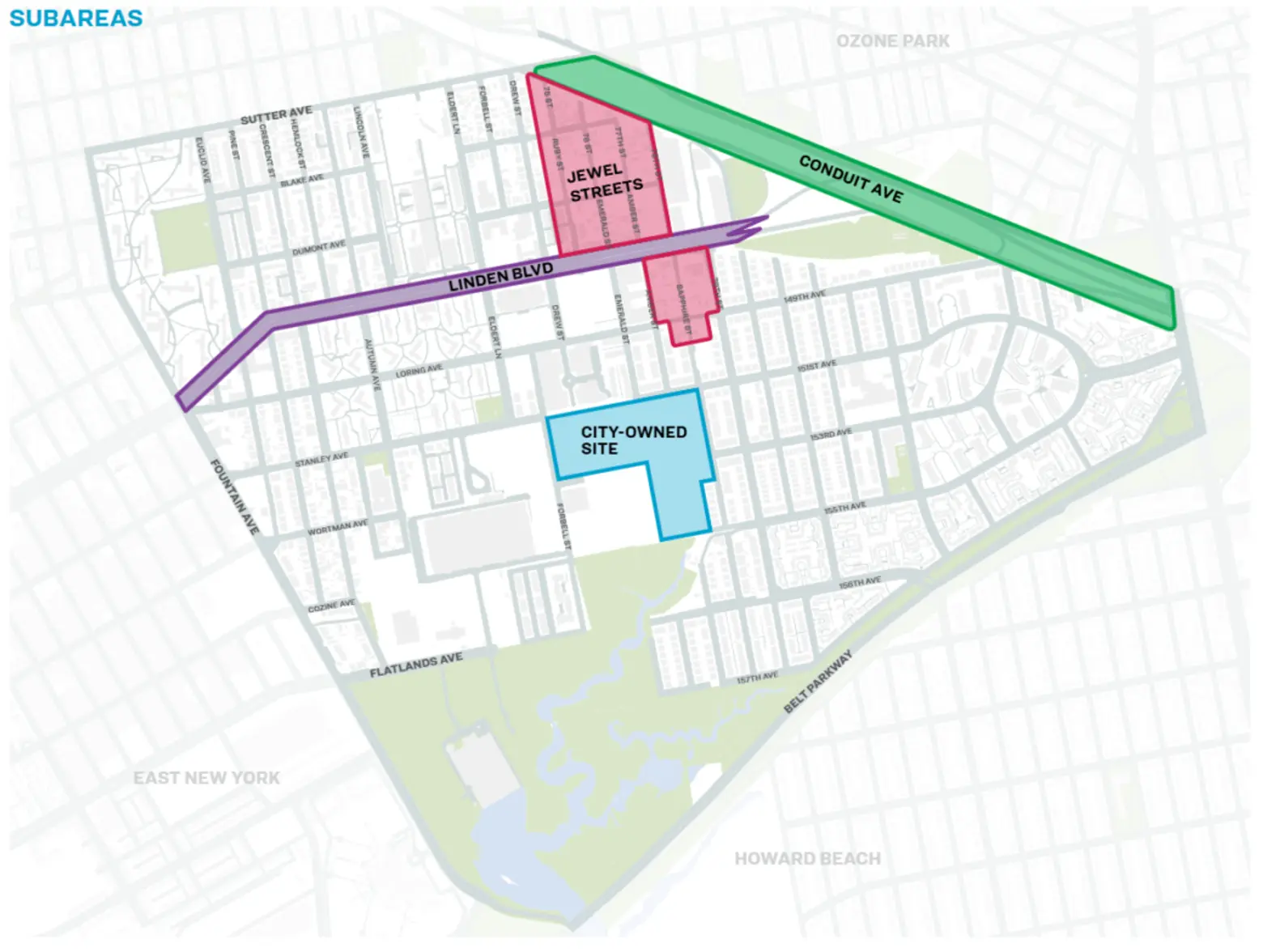

A long-neglected, low-lying area on the Brooklyn-Queens border known as “The Hole” may finally be getting attention from the city. On Tuesday, Mayor Eric Adams announced a $146 million investment in the area, also known as the Jewel Streets, to install a long-needed sewage system in the neighborhood, which regularly floods even after light rainfall. The plan also calls for a 17-acre city-owned site to become 1,400 housing units, a rezoning to unlock an additional 3,600 homes, and other flood-prevention infrastructure.

The neighborhood known as “The Hole” sits just a few feet above sea level—one of the lowest elevations in the five boroughs. A low-lying creek runs beneath many of its streets. Without a sewage system, the area experiences chronic flooding, forcing residents to rely on septic tanks that frequently overflow even after modest rainfall, according to Gothamist.
While advocacy by neighborhood residents and stakeholders in 2022 led to smaller investments that somewhat improved drainage, the area remains prone to frequent flooding and marked by visible neglect, with dilapidated buildings and an overall sense of disrepair.
However, this is set to change, as the $146 million investment is part of Adams’ broader “Jewel Streets Neighborhood Plan,” a comprehensive initiative aimed at addressing chronic flooding while creating new affordable housing.
The plan focuses on four main areas: Jewel Streets, Conduit Avenue, and Linden Boulevard, which would receive traffic safety upgrades, and a 17-acre city-owned site in East New York that would accommodate future housing.
In the Jewel Streets area, the city plans an ambitious project to create a resilient stormwater system tailored to the neighborhood’s unique conditions. By combining traditional sewers with natural drainage methods, the new infrastructure would manage water both above and below ground, restoring the historical connection between the area and Jamaica Bay.
The city plans to install “Bluebelt” ponds to capture and filter rainwater, supported by a network of storm sewers that would channel runoff into the ponds beneath Linden Boulevard, bypassing the existing combined sewer system. In addition, the city will raise and reconstruct select streets and sidewalks to improve transit connections and make the area safer for walking, biking, and driving.
To support residents during the decade-long project, the city is offering locals two options: to remain in their homes with retrofits that improve flood resiliency, or to voluntarily relocate through a buyout program to lower-risk areas as part of the city’s Resilient Acquisitions pilot program.
Along Linden Boulevard, the city plans to improve connections to the subway and promote faster bus service while encouraging the redevelopment of vacant lots into mixed-use buildings with housing above ground-floor shops, restaurants, and community spaces. The plan also calls for safer street crossings, accessibility upgrades such as ADA-accessible median bus stops, and other pedestrian improvements.
On Conduit Avenue—a key corridor connecting Central Brooklyn and John F. Kennedy International Airport—the city plans to address safety issues caused by speeding vehicles and the street’s wide median, which spans up to 300 feet. The project would also add much-needed pedestrian infrastructure, including sidewalks and crosswalks, while tackling quality-of-life concerns such as flooding, poor lighting, and vacant lots.
The city is also pursuing a major rezoning that would allow for roughly 3,600 new homes, along with new retail and community spaces along Linden Boulevard. On the 17-acre city-owned site in the Jewel Streets area, the city plans to redevelop the property with up to 1,400 affordable and mixed-income homes, including some with homeownership opportunities.
The Jewel Streets Neighborhood Plan is likely to be one of Adams’ final major contributions to New York City and will require support from the next administration to move forward. The project is far from certain, as it must still undergo land use and environmental reviews that could take years to complete, according to New York Times.
Adams called residents of “The Hole” the crown jewel of the city and said the days of neighbors “fending for themselves” are over.
“New Yorkers in this neighborhood are the crown jewel of our city; unfortunately, we cannot say the same for the area’s infrastructure,” Adams said. “For too long, the Jewel Streets neighborhood has suffered from chronic flooding, dangerous streets, and a dire housing shortage.”
He added, “When we came into office, we said the days of letting government ignore the Jewel Streets and leaving residents to fend for themselves were over, and today, with the release of this plan, we are again keeping our word.”
For now, community organizers are working to connect city officials with local residents, advocating for the project and pushing to prevent further delays in delivering long-promised infrastructure upgrades, according to The City. The rezoning process is expected to begin in 2026 if the next mayor decides to support it.
RELATED:
Source link





